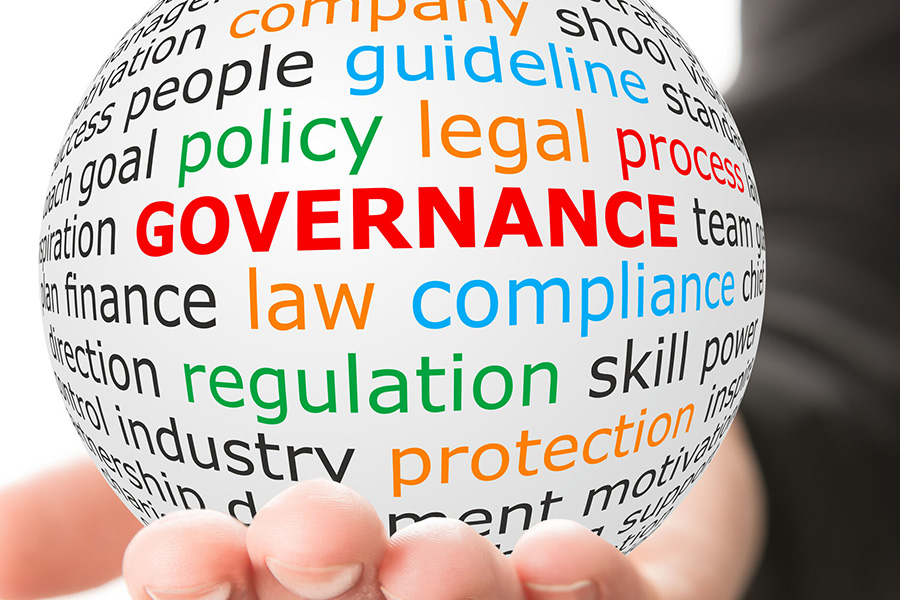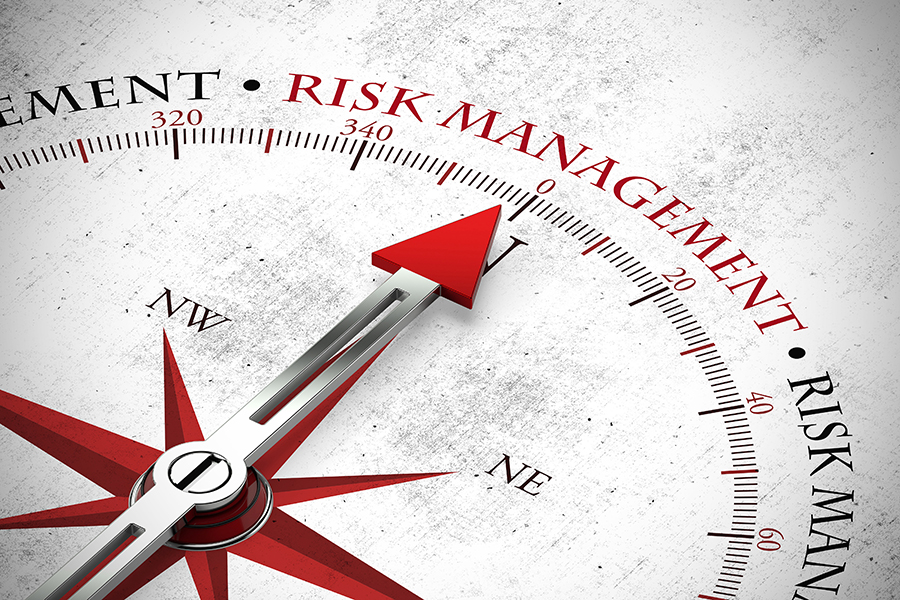Unit 4: Good governance and organisational oversight
| Site: | OpenLearn Create |
| Course: | Leadership in Safeguarding in the International Aid Sector |
| Book: | Unit 4: Good governance and organisational oversight |
| Printed by: | Guest user |
| Date: | Friday, 21 November 2025, 6:28 AM |
Table of contents
- 4.1 Introduction
- 4.2 Role and responsibilities
- 4.3 Being aware of power and privilege
- 4.4 Recruitment of a diverse Board
- 4.5 Lessons learnt
- 4.6 A purpose-driven Board
- 4.7 Being a critical friend
- 4.8 Risk management
- 4.9 Working with regulatory bodies
- 4.10 Working on internal relationships
- 4.11 Webinar 3
- 4.12 Unit 4 Knowledge check
- 4.13 Review of Unit 4 and the post-course survey
- 4.14 End of course message
- Acknowledgements
4.1 Introduction
In this unit we look at how a Board should function to ensure that safeguarding is kept at the top of the agenda as an organisational risk.

In this final unit we look at the Board, the ultimate governing body of any organisation, which is responsible for good governance and oversight.
The Board should be made up of individuals with different knowledge and skills sets, so as to complement one another and also to ensure that they are able to support the growth of the organisation. Often Board members offer their time and efforts voluntarily – although organisations may reimburse them for out-of-pocket expenses, such as travel and perhaps accommodation costs for in-person meetings.
Boards ought to exercise their authority wisely and ensure that management provides them with the full information that they require to enable them to make good decisions. They are also in the position of being a critical friend to the organisation, providing much needed oversight and holding senior management to account.
Even though Board members are essentially volunteers, they can also be registered as the unpaid Directors of an organisation, which means that they have legal duties to perform, such as signing off financial annual returns and other reports. Directors of an organisation (even though the role is voluntary) could be held to account legally for criminal or even civil breaches of the law. Under British law, these Directors also become trustees of the organisation if it is successfully registered as a charity under the Charities Commission.
4.2 Role and responsibilities
A Board of trustees must take their role and responsibilities seriously – this would include overseeing risk management, finance and audit, and health and safety, as well as safeguarding.
Failure to do so could result in intervention by regulatory bodies, such as the Registrar of Societies or, if in the UK, the Charity Commission. Safeguarding should be a key governance priority for all charities and organisations working in the international aid sector.
Here’s a list of key actions on safeguarding for trustees that has been put together by the Charity Commission of England and Wales:
- Ensure your charity has an adequate safeguarding policy, Code of Conduct, and any other safeguarding procedures. Regularly review and update the policy and procedures to ensure they are fit for purpose.
- Identify possible risks, including risks to your beneficiaries or to anyone else connected to your charity, and any emerging risks on the horizon.
- Consider how to improve the safeguarding culture within your charity.
- Ensure that everyone involved with the charity knows how to recognise, respond to, report and record a safeguarding concern.
- Ensure people know how to raise a safeguarding concern.
- Regularly evaluate any safeguarding training provided (which should be mandatory) ensuring it is current and relevant.
- Review which posts within the charity can and must have a criminal records check.
- Have a risk assessment process in place for posts that do not qualify for a criminal records check, but which still have contact with children or adults at risk.
- Periodically review your safeguarding policy and procedures, learning from any serious incident or ‘near miss’.
- If your charity works in different countries or locations, find out what different checks and due diligence you need to carry out in different geographical areas of operation.
- Identify a Board member as a designated safeguarding Board member.
- Ensure the Board has an oversight of any potential investigations (to ensure that complaints have been handled appropriately).
- Ensure there is mandatory staff training, including for the partners you work with, and ensure that they understand their roles and responsibilities.
In this guidance:
- ‘Must’ means something is a legal or regulatory requirement or duty that trustees must comply with.
- ‘Should’ means something is good practice that the Commission expects trustees to follow and apply to their charity.
Source: UK Charity Commission Guidance infographic
|
Activity 4.1 Reviewing roles and responsibilities Reread the list above. Thinking about your own organisation are any of the key actions particularly challenging? Make a note of them in your learning journal. |
4.3 Being aware of power and privilege
Boards could be made up of a similar demographic in terms of age, gender, ethnicity or even mindset.
Although this can provide much-needed stability, it could also mean that Boards are unable to move organisations forwards, particularly in a more volatile and increasingly diverse world.
There is also a risk that Board members are appointed for reasons other than their practical experience of how the international development and/or humanitarian sectors actually work on the ground.
For example, research indicates that in the UK, 75% of Board members of charities are from average household incomes of £100,000 (when the overall average household income in the UK is £30,000). Almost 71% of Board members are being recruited informally, and Chair and treasurer positions are almost always held by men. (Source: Charity Commission report: Charities should do more to promote diversity).
The European Commission is pushing forward with a law in the EU for at least 40% of the Boards of corporations to be made up of women, with the publication of a Gender Index (Source: European Women on Boards).
![]()
In February 2018, the Chair of the Board for Oxfam GB that she was sorry that the former Country Director for Haiti and others had misused their power and privilege against vulnerable women and children by sexually abusing them. Watch the video below to listen to her.
Unfortunately, that misuse of power and privilege still continues in organisations which have received huge sums of funding from the Northern Hemisphere or alternatively are based in the Northern Hemisphere.
In the recent International Development Committee Inquiry under the UK Parliament, Boards and senior management teams have been heavily criticised for not being aware of their own power and privilege.
“We must stop this patronising attitude of aid giants imposing aid programmes on beneficiaries and local groups without including them in the design. It only builds distrust and gives an ‘us and them’ picture to the people that the aid sector is meant to support, and also the abusers looking to exploit.”
(Source: Sarah Champion, Chair of the International Development Committee on the publication of the IDC report on SEAH, Jan 2021)
Some may even suffer from ‘white saviour syndrome’, which has been one of the factors that has prevented Boards from being effective.
Therefore, it is vitally important that Boards of international organisations are diverse and inclusive of people of colour, gender, sexuality, age, different abilities, and represent different regions of the globe.
4.4 Recruitment of a diverse Board
In order to ensure that the organisation benefits from a variety of views from the best minds and informed decision-making, the recruitment of Board members is of vital importance.
Even for network or membership organisations, where they may not have a choice on who is on the Board, the members should develop clear terms of reference and a job description, which should include responsibilities for safeguarding (as this is a shared responsibility) when recruiting Board members.
Board members should undergo a clear recruitment process that includes submitting an application form and a CV and attending an interview where safeguarding questions are asked.
A Board made up of different ages, gender, ethnicity and sexuality will provide deeper, more meaningful discussions and improve accountability. However, a Board where everyone thinks or looks the same will fall into the trap of complacency and denial when safeguarding concerns arise.
![]()
Watch the video above, in which Penny Wilson of Getting on Boards highlights eight key points on how to recruit a diverse Board.
|
Activity 4.2 Based on your learning so far, note in your learning journal why a diverse Board is beneficial for keeping people safe in your organisation? Is there any learning your organisation can take from these 8 points? |
![]()
Want to find out more?
For more guidance on recruiting and diversity, follow the link below.
4.5 Lessons learnt
The UK Charity Commission undertook an inquiry into Oxfam when whistleblowers raised their concerns that Oxfam was not taking the safeguarding concerns of the sexual exploitation of women (and possibly children) by the Country Director of Haiti and other senior management seriously.
In a foreword to the report, the Chair of the Charity Commission said that no charity is more important than the mission it pursues or the people it serves. The case of Oxfam has not only implications for one, large charity but for the wider sector to learn from and be held to account.
The report heavily criticises the Board and senior management of Oxfam as it missed opportunities to address issues raised by its own safeguarding staff and exposed the charity to undue risk.
For example:
- Resourcing and capability around safeguarding at the charity between 2015 to 2017 did not match the risks associated with the charity’s global reach and the nature of its work.
- The charity’s approach to safeguarding case work was at times unstructured and a lack of adequate assurance and oversight mechanisms meant trustees were unable to identify serious failures in case handling, including poor record keeping, failings which the inquiry is ‘extremely critical’ of.
- Weaknesses in the charity’s HR practices prior to 2018, particularly concerning problems around vetting and referencing and management oversight, led to a ‘culture of tolerance of poor behaviour’.
- As late as 2017, promises that the resources for safeguarding would be increased were not delivered.
|
Are any of these points from the Oxfam report applicable to your own organisation? How can these challenges be overcome? |
4.6 A purpose-driven Board

According to BoardSource’s Leading with Intent, it’s most recent study of more than 800 public charity CEOs and Board chairs, non-profit Boards in the USA are currently:
1. Preoccupied with fundraising above all else
When asked how important the Board’s performance is, across 18 areas of Board responsibility, 70% of chief executives rated fundraising as ‘very important’ – above most other categories of Board performance including thinking strategically as a Board, setting the strategic direction of the organisation, knowledge of organisational programs, and understanding the context in which the organisation is working.
2. Disconnected from the communities and people they serve
Fifty per cent of all chief executives said that they did not have the right Board members to ‘establish trust with the communities they serve’. Only a third of Boards (32%) place a high priority on ‘knowledge of the community served’, and even fewer (28%) place a high priority on ‘membership within the community served’.
3. Ill-informed about the contexts in which their organisation is operating
Only 25% of Boards say that ‘knowledge of the organisation’s work or field’ is a high priority in Board recruitment, and only 11% place a high priority on ‘prior or current experience with a similar organisation/mission area’.
4. Lacking in racial and ethnic diversity
Not only are Boards overwhelmingly white (78% of Board members are white and 19% of Boards are all white), but Boards lacking in racial/ethnic diversity self-report that their Boards’ racial/ethnic makeup negatively impacts their ability to:
- Understand the organisation’s operating environment and work.
- Attract and retain talent for both the Board and staff.
- Enhance the organisation’s standing with funders, donors, and the public.
- Understand how to best serve the community.
- Cultivate trust and confidence with the community served.
What then can be done? To address these issues, purpose-driven Boards should ask the following questions to reverse the four gaps highlighted above:
- What is best for the desired social outcome we seek?
- How would this impact the players and dynamics within our context/ecosystem?
- How will this decision or strategy create more equitable outcomes?
- How can we avoid systematic inequities?
- Is our Board populated in a way that ensures that our power is authorised by and inclusive of the community impacted by the work that we do?
- Are we doing all we can to listen to what our programmatic stakeholders tell us is most important?
(Source: The Four Principles of Purpose-Driven Board Leadership)
|
Activity 4.3 The principles of a purpose-driven Board The article, Leading with Intent, defines the four principles of a purpose-driven Board as: Purpose before organization: prioritizing the organization's purpose, versus the organization itself. Respect for ecosystem: acknowledging that the organization's actions can positively or negatively impact its surrounding ecosystem, and a commitment to being a respectful and responsible ecosystem player. Equity mindset: committing to advancing equitable outcomes, and interrogating and avoiding the ways in which the organization's strategies and work may reinforce systemic inequities. Authorized voice and power: recognizing that organizational power and voice must be authorized by those impacted by the organization's work. How can a purpose-driven Board strengthen organisational safeguarding culture and practice? |
4.7 Being a critical friend
The Board must ensure that there is a clear oversight over the decisions of management with regards to safeguarding.
To do so, the Board needs to be equipped with sufficient information to ask appropriate yet challenging questions that provide the crucial checks and balances of clear oversight and good governance.
Together with senior management, the Chair of the Board should ensure that:
- There is a safeguarding Board member designated to lead the safeguarding complaint handling committee.
- Safeguarding is a standard agenda item at Board meetings.
- There is a confidential report from the safeguarding committee to the Board.
- A safeguarding register is being kept by management with all concerns being logged.
- The Board includes safeguarding in its organisational management risk framework.
- The Board checks and approves a budget for any safeguarding support that may be required, which may include staff salaries, training, costs of investigations, etc.
|
Activity 4.4 Donor requirements Many of the points above may be donor requirements, particularly for those who have aligned safeguarding language in funding agreements adopted by the UK Foreign, Commonwealth and Development Office. Identify some of the safeguarding requirements from your organisational donors, which the Board must take notice of, and note them in your learning journal – is the Board aware and of the requirements and actively ensuring they are met? |
4.8 Risk management

All international aid organisations have a responsibility to ensure they don’t cause harm to anyone who has contact with them.
Charities working with children or adults at risk or vulnerable adults have extra responsibilities. Even if you delegate some activities to a safeguarding lead or group, Board members retain overall responsibility. Trustees always remain collectively
responsible for all decisions that are made and actions that are taken with their authority.
(Source: Safeguarding
for charities and trustees)
It is important that Boards review and agree the risks identified, their prioritisation and their management, as well as the contingency arrangements in place. Board members must consider if they are satisfied with the measures the organisation is putting in place to reduce the safeguarding risks that prevent concerns arising or minimise harm if incidents do occur. They should also review the risk appetite for safeguarding risks.
A common way to approach this is to decide whether to treat, tolerate, terminate or transfer the risk. For example, the Board may decide that it is not acceptable to proceed with a planned activity with a high-risk profile unless additional resources
are available to reduce those risks. This is an opportunity to highlight the organisation’s obligations to take reasonable steps to protect individuals from harm and to convey the Board’s attitude towards risk management.
(Source: Bond: Good
Governance for Safeguarding)
The Board should put in place and regularly review the organisation’s process for identifying, mitigating, prioritising, escalating, managing, learning from safeguarding risks and, where applicable, the organisation’s system of internal controls to manage these risks. This ought to be reviewed annually, if not sooner. The approach to risk should be described in its annual report, in line with regulatory requirements.
Boards and their management teams should specifically consider safeguarding risks when:
- Working with children, young people or vulnerable adults.
- Working with adults at risk.
- Operating online.
- Working with other bodies.
- Working overseas.
When developing a risk assessment, a Board should consider whether there is a policy framework in place, comprising of:
- A Code of Conduct.
- A whistleblowing policy.
- A safeguarding policy.
- Safety and security procedures.
|
Activity 4.5 Think of a safeguarding allegation that your organisation has had to manage. How successfully do you think it has managed risk in relation to the points below? Note any learning from your reflections in your journal:
If you work within the UK, here is a checklist that may be helpful to you to think through the next steps: Guidance on reporting safeguarding concerns in a charity. |
![]()
Want to find out more?
For more guidance for safeguarding leads, follow the link below.
4.9 Working with regulatory bodies
All organisations will have some form of regulation to work under – depending on the type of organisation they are and under what regulatory body they have been incorporated.
For example, those which have been registered as a company will need to abide by the regulations of Companies House (in the UK) as well as the various legislation of that jurisdiction for companies.
In other countries, organisations may be registered with the Registrar of Societies and there would be legislation related to regulating how the society functions, what it can and cannot do, etc.
At all times, the Board must ensure that their organisations are up to date with the latest legal and regulatory requirements since it is their duty to do so, otherwise the organisation would be at risk of de-regulation. At any time, a member of the public could complain about an organisation to the regulatory body, or the regulatory body could make a spot-check on whether an organisation is functioning in a safe and accountable way.
Increasingly, organisations have been asked for records regarding safeguarding, for example:
- How many reports have been made regarding harm to staff, volunteers and beneficiaries?
- Which forms of harm have taken place?
- How were decisions made on how to manage safeguarding concerns?
- What were the outcomes of concerns raised?
- What were the lessons learnt and how were they incorporated back into policies and procedures so that that harm could be prevented from happening again?
Many institutional donors such as FCDO also require organisations that receive funding from it to report safeguarding concerns to it as soon as an organisation becomes aware of safeguarding concerns. This promotes greater accountability in the sector.
4.10 Working on internal relationships
Boards also have a duty to work on relationships with management and staff internally.
They need to do this in a way that does not undermine management’s responsibility for the supervision of staff, but they should be accessible to staff, volunteers and beneficiaries in order to provide them an opportunity to raise concerns should they wish to. These opportunities could be part of the whistleblowing process and/or safeguarding reporting process.
Board members who are independent could provide a more objective and clearer approach to what next steps should be taken and ensure that the process is more accountable, and survivor centred.
The Board should allow staff and volunteers to carry out any functions that have been delegated to them. The Board’s role is to ensure that this delegated authority is being properly exercised, through appropriate monitoring and reporting procedures and, where appropriate and possible, independent checking, as the responsibility remains theirs.
![]()
Want to find out more?
For more guidance on internal relationships, follow the link below.
4.11 Webinar 3
|
This webinar, which discussed some of the content of the learning in this unit, took place on 14th June 2022. A recording of the webinar (62 minutes) entitled The Importance of Board Governance and Oversight that Supports Organisational Safeguarding is available for you to watch below. Each of the speakers approaches the topic from a different perspective, please note in your learning journal any key points from each that you would like to take back to discuss in your own organisation. A PDF of the webinar presentation is available in the Downloads section below. Topic: Leadership skills Speakers:
Here is a downloadable version of the slides from this webinar. Further resources to support this webinar: The independent review of workplace culture at Save the Children UK (2018) |
4.12 Unit 4 Knowledge check

The end-of-unit knowledge check is a great way to check your understanding of what you have learnt.
There are five questions, and you can have up to 3 attempts at each question depending on the question type. The quizzes at the end of each unit count towards achieving your Digital Badge for the course. You must score at least 80% in each quiz to achieve the Statement of Participation and Digital Badge.
4.13 Review of Unit 4 and the post-course survey

In this final Unit, we have explored the importance of ensuring good governance at Board level to make sure that safeguarding is recognised as an important organisational risk.
The independence of the Board is essential, and we explored how recruitment to the Board should be inclusive and diverse.
We looked at the following functions of the Board:
- Setting the tone of the organisational culture.
- Leading by example, ensuring that safeguarding is adequately funded and that the organisation has access to the right expertise.
- Ensuring that there is a designated safeguarding trustee on the Board, and a Safeguarding Committee has been set-up.
- Making safeguarding a part of the organisational risk framework and that there is an agreed risk assessment and risk appetite, and this is continually assessed.
- Reporting is escalated to regulatory bodies and law enforcement.
- Holding management to account for decisions, while recognising that responsibility remains with the Board.
|
The list above is non-exhaustive. What did you take away from this unit? Make some notes in your learning journal. Post-course survey To evaluate how effective this course has been in improving the knowledge, understanding and practice of learners, we invite you to complete the post-course survey. This post-course survey will only take about 5 minutes to complete and all information provided in it is received anonymously. All data will be stored securely at The Open University and will only be accessed by the course team. Thank you in advance. |
4.14 End of course message
![]()
Watch the video above, in which Jan Webb, the Academic Lead for the UK Aid-funded Open University safeguarding courses, does a round-up of the key messages and takeaways from this course.
Acknowledgements
We would very much like to thank the following organisations for their time as stakeholders, promoters, critical reviewers of the content, and contributors to interviews in the audio visual aids that were produced for this course:
Bond UK
The Catholic Church, Malta
CHS Alliance
Liverpool School of Tropical Medicine
Médecins Sans Frontières, Spain
Mercy Corps
Oxfam GB
The Queen’s Commonwealth Trust
Safeguarding Resource and Support Hub
StreetChild UK
Tearfund, Rwanda.
Grateful acknowledgement is made to the following sources:
Course image
Course image: EtiAmmos / Shutterstock
Unit 1
Images
Section 1.12: fizkes / iStock / Getty Images Plus
Section 1.15: Olivier Le Moal / 123RF
Section 1.17: AndreyPopov / iStock / Getty Images Plus
Section 1.18: Feodora Chiosea / iStock / Getty Images Plus
Text
Section 1.10: Facilitators’ guide: UN System Chief Executives Board for Coordination and Inter-Agency Standing Committee (2021) A session on values, attitudes and organizational culture in relation to prevention of sexual misconduct (sexual exploitation and abuse and sexual harassment): Facilitators Guide, https://psea.interagencystandingcommittee.org/sites/default/files/2021-06/Facilitators%27%20Guide%20-%20Organizational%20Culture%20Session%20Sexual%20Misconduct.pdf
Section 1.15: Leading Well: CHS Alliance and ICVA (2021) LEADING WELL: Aid leader perspectives on staff well-being and organisational culture, https://www.chsalliance.org/get-support/resource/leading-well-aid-leader-perspectives-on-staff-well-being-and-organisational-culture/
Video
Section 1.1: The Open University (Images: truthseeker08 / Pixabay; 寻雨小鱼 / Pixabay; David Mark / Pixabay; Jason Goodman / Unsplash; Headway / Unsplash; Christina / Unsplash; Jo Szczepanska / Unsplash; Christin Hume / Unsplash; techvaran / Pexels; Kenny Eliason / Unsplash; Amy Hirschi / Unsplash; Tom Fisk / Pexels; teresa mirabella / Unsplash; Mat Napo / Unsplash; Jeswin Thomas / Unsplash; Annie Spratt / Unsplash)
Section 1.9: The Open University (Images and clips: © Médecins Sans Frontières; © Mercy Corps; photosforyou / Pixabay; Gracielasosa / Pixabay; Father James / Unsplash; Lennon Caranzo / Unsplash; Cecilia Milagros León García / Unsplash; © Médecins Sans Frontières; antonytrivet / Pixabay; Science Photo Library; Jake Lyell / Alamy Stock Photo; Jake Lyell / Alamy Stock Photo; Airfocus / Unsplash; © Mercy Corps; Priscilla Du Preez / Unsplash; © Mercy Corps; Denis Ngai / Pexels; Kevin Yudhistira Alloni / Unsplash)
Section 1.11: TheThoughtBulb
Section 1.13: The Open University (Images and clips: User - 14995841 – Pixabay; VisionPics / Pixabay; © Médecins Sans Frontières; Gabrielle Henderson / Unsplash; Anoof Junaid / Unsplash; Wonderlane / Unsplash; LinkedIn Sales Solutions / Unsplash; Lagos Food Bank Initiative / Pexel; Joel Muniz / Unsplash; © Médecins Sans Frontières; Lagos Food Bank Initiative – Pexels; Joel Muniz/ Unsplash; Julia M Cameron / Pexels; © Médecins Sans Frontières)
Audio
Section 1.14: Part A and B: © CHS Alliance 2022
Unit 2
Images
Section 2.2: Photo by Headway on Unsplash
Section 2.5: Adapted from Puvanendran, K., Agbalaya, T. and Christie, S. (2021) Anti-racist principles, guidance and toolkit, Welllcome, Licensed under a Creative Commons Attribution 4.0 International (CC BY 4.0) license, https://www.creativecommons.org/licenses/by/4.0/
Section 2.8: tumsasedgars / iStock / Getty Images Plus
Section 2.8: Based on Department of Health (2015) Learning not blaming, https://assets.publishing.service.gov.uk/government/uploads/system/uploads/attachment_data/file/445640/Learning_not_blaming_acc.pdf Reproduced under the terms of the Open Government Licence v3.0, https://www.nationalarchives.gov.uk/doc/open-government-licence/version/3/
Section 2.11: AndreyPopov / iStock / Getty Images Plus
Section 2.13: Feodora Chiosea / iStock / Getty Images Plus
Text
Section 2.2: Bond (2021) Racism, power and truth: Experiences of people of colour in development, https://www.bond.org.uk/sites/default/files/resource-documents/bond_racism_power_and_truth.pdf Licensed under a Creative Commons Attribution-NonCommercial 4.0 International (CC BY-NC 4.0) license, https://creativecommons.org/licenses/by-nc/4.0/
Section 2.9: Adapted from Bond (2019) Safeguarding report-handling mechanism: Case studies, www.bond.org.uk , Licensed under a Creative Commons Attribution-NonCommercial 4.0 International (CC BY-NC 4.0) license, https://creativecommons.org/licenses/by-nc/4.0/
Video
Section 2.3: Bond, ‘Racism, power and truth: people of colour’s experiences in development’, https://youtu.be/llDRCpO_WNw
Section 2.12: The Open UniversityUnit 3
Images
Section 3.2: ID 55823511 © Retrostar | Dreamstime.com
Section 3.7: Adapted from CHS Alliance Management Investigation Checklist, https://www.chsalliance.org/get-support/resource/guidelines-for-investigations/
Section 3.9: ID 42965243 © Iqoncept | Dreamstime.com
Section 3.14: AndreyPopov / iStock / Getty Images Plus
Section 3.15: Feodora Chiosea / iStock / Getty Images Plus
Text
Section 3.3: RSH flowchart resource: This resource was produced by the Safeguarding Resource and Support Hub: https://safeguardingsupporthub.org/
Video
Section 3.8: © 2015-2021 Resileo, ‘How to Cope with Workplace Bullying’ https://youtu.be/UyFXZTq0b1w, licensed under a Creative Commons Attribution-ShareAlike 3.0 Unported (CC BY-SA 3.0) license, http://creativecommons.org/licenses/by-sa/3.0/
Section 3.10: The Open University (Images and clips: Denis Ngai – Pexels; difisher / Pixabay; Wan Kurniawan / Unsplash; Annie Spratt / Unsplash; © Oxfam; Denis Ngai / Pexels; Denis Ngai / Pexels; Denis Ngai / Pexels; © Médecins Sans Frontières; © Mercy Corps; ikhail Nilov / Pexels; Denis Ngai / Pexels; © Médecins Sans Frontières; © Mercy Corps; Kenny Eliason / Unsplash; Christina / Unsplash; © Oxfam; © Mercy Corps; Denis Ngai / Pexels; © Mercy Corps; Denis Ngai / Pexels; © Mercy Corps; Rosie Sun / Unsplash; Gabriella Clare Marino / Unsplash)
Section 3.13: The Open University
Unit 4
Images
Section 4.1: emevil / 123RF
Section 4.6: Mascha Tace / Shutterstock
Section 4.8: Robert Kneschke / Shutterstock
Section 4.12: AndreyPopov / iStock / Getty Images Plus
Section 4:13: Feodora Chiosea / iStock / Getty Images Plus
Text
Step 4.2: The Charity Commission (2021) ‘Safeguarding and protecting people for charities and trustees’, https://www.gov.uk/guidance/safeguarding-duties-for-charity-trustees#download-infographic Reproduced under the terms of the Open Government Licence v3.0, https://www.nationalarchives.gov.uk/doc/open-government-licence/version/3/
Step 4.6: Leading with intent: BoardSource (2017) Leading with Intent: 2017 National Index of Nonprofit Board Practices, leadingwithintent.org
Video
Section 4.3: © The Star - Haiti scandal 'breaks my heart' - Oxfam director
Section 4.4: © 2021 Getting on Board
Section 4.11: The Open University
Section 4.14: The Open University (Images: Lagos Food Bank Initiative / Pexels; Joel Muniz / Unsplash; user_id:23796335 – Pixabay)
Every effort has been made to contact copyright holders. If any have been inadvertently overlooked the publishers will be pleased to make the necessary arrangements at the first opportunity. Important: *** against any of the acknowledgements below means that the wording has been dictated by the rights holder/publisher, and cannot be changed.